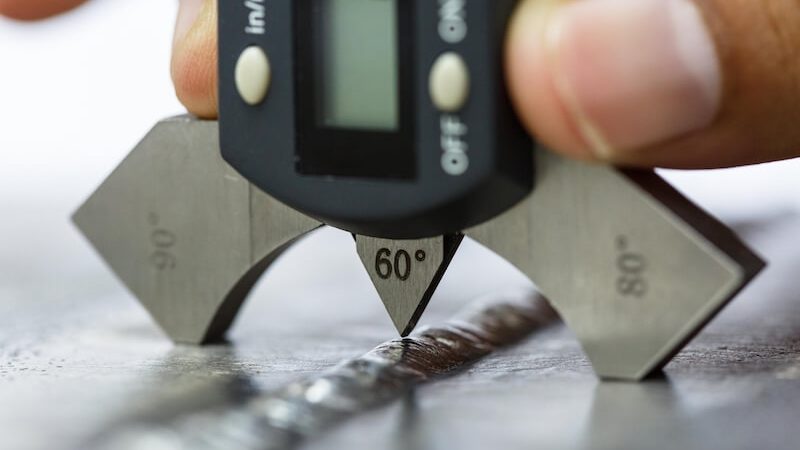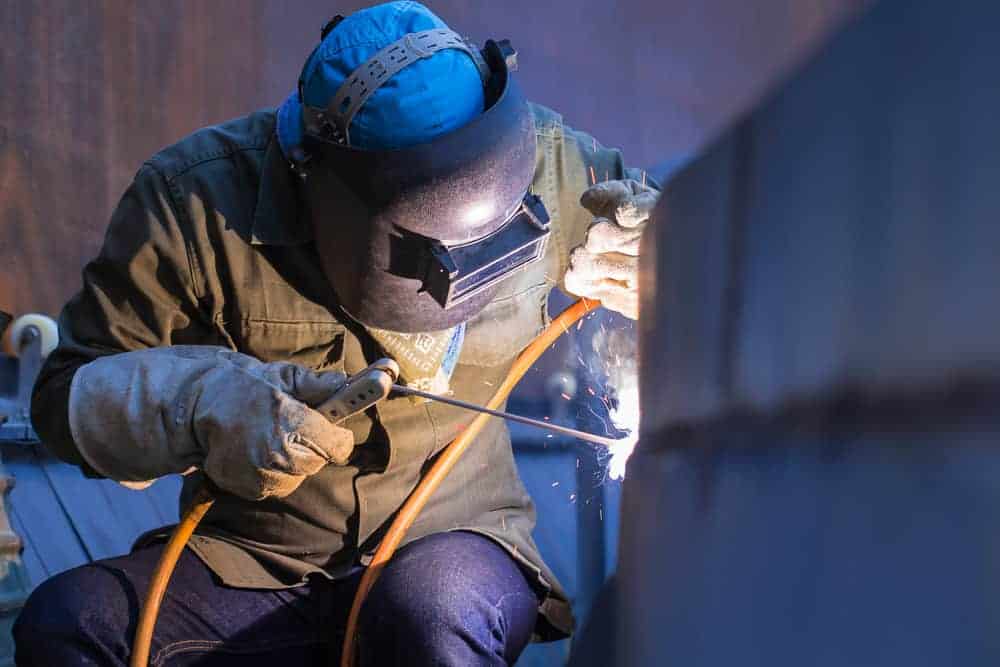Advanced Houston Welding Inspection Techniques for Accurate Results
How Welding Examination Works: An In-Depth Evaluation of Approaches, Standard, and the Role of Assessors in Making Certain Structural Stability and Safety And Security
Welding assessment is a necessary element in the building and production industries, where the stability of welded joints is vital to safety and integrity. Numerous approaches, including visual and non-destructive screening techniques, are used to identify possible defects that can jeopardize architectural efficiency - Houston Welding Inspection. Inspectors are entrusted with not only evaluating weld top quality versus rigid standards but also interpreting intricate codes and requirements. As we check out the ins and outs of this career, the obstacles encountered by inspectors in keeping safety and security and compliance will expose a deeper understanding of their critical function in protecting facilities.
Relevance of Welding Inspection
Welding inspection is vital in making sure the integrity and security of bonded structures, with studies indicating that as much as 70% of structural failings can be traced back to poor welding methods. This underscores the importance of methodical evaluation procedures throughout the welding lifecycle, from prep work to conclusion. Reliable inspection not only determines flaws prior to they escalate into significant issues however also guarantees conformity with sector requirements and guidelines.

The duty of welding assessors expands past simple quality control; they are vital in safeguarding public safety and security and reducing liability for organizations. By executing strenuous examination procedures, firms can detect troubles such as incomplete fusion, splits, or extreme porosity, which can compromise the overall toughness of a welded joint. Continuous training and qualification of examiners add to the overall quality assurance in welding procedures, fostering a society of safety and security and quality.
On top of that, welding inspection plays a critical duty in preserving operational efficiency. Recognizing flaws early while doing so assists in prompt restorative activities, decreasing expensive rework and task delays. Inevitably, a robust assessment structure works as a structure for dependable and durable welded frameworks, guaranteeing they meet both practical and safety and security requirements.
Typical Inspection Techniques
Just how can one ensure the high quality of bonded joints throughout the evaluation process? The application of different assessment approaches is important in analyzing weld integrity and identifying potential problems. Typical approaches consist of Visual Examination (VT), which is often the first line of defense, permitting assessors to identify surface defects such as cracks, porosity, or incomplete fusion by aesthetically assessing the welds.
Ultrasonic Testing (UT) is another extensively made use of strategy, utilizing high-frequency acoustic waves to determine interior problems within the weld. This method is particularly reliable for identifying concerns that are not noticeable to the naked eye. Radiographic Testing (RT) makes use of X-rays or gamma rays to develop photos of the weld, allowing the identification of volumetric defects, such as gaps or incorporations.
Magnetic Fragment Examining (MT) and Fluid Penetrant Evaluating (PT) are additionally noticeable techniques, focusing on surface flaws. MT counts on electromagnetic fields to disclose surface and near-surface suspensions, while PT includes using a fluid dye to highlight imperfections. Each of these techniques offers a distinctive function, guaranteeing the thorough examination of welded joints and guarding architectural stability and safety and security.
Requirements for Reviewing Welds
The analysis of welds is directed by a set of well-known standards that make certain both performance and safety and security in welded structures. These criteria encompass numerous elements, consisting of weld dimension, profile, and penetration, which need to satisfy defined standards. Compliance with sector codes, such as those established by the American Welding Culture (AWS) or the American Culture of Mechanical Designers (ASME), is important in figuring out the acceptability of a weld.

Weld metallurgy plays a crucial role; the analysis considers the combination quality in between base and filler materials, along with heat-affected zones. The overall mechanical properties, consisting of tensile strength and ductility, have to fulfill the requirements developed for the specific application. Jointly, these requirements make sure that welds not only meet aesthetic criteria but additionally perform accurately under operational conditions.
Role of Welding Inspectors
A welding examiner's know-how is essential in guaranteeing the honesty and top quality of welded structures. These specialists play a vital duty in the manufacture and construction process by confirming that welding procedures comply with developed standards and specifications. Their duties encompass a comprehensive array of jobs, consisting of aesthetic inspection of welds, reviewing welding documents, and performing non-destructive testing (NDT) approaches such as radiographic or ultrasonic testing to recognize problems.
Welding inspectors are likewise in charge of analyzing welding codes and standards, ensuring that the welders are qualified which the products used fulfill the necessary needs - Houston Welding Inspection. They should keep thorough records of examinations, which function as documents of conformity and quality control. These examiners often work together with designers and task managers to deal with any type of issues that occur during the welding process, offering suggestions for restorative actions when necessary.
Along with technical skills, effective communication is crucial, as welding inspectors have to share searchings for plainly to stakeholders and assist in training and assistance for welders. Ultimately, their duty is indispensable to preserving check my site security and integrity in bonded frameworks, contributing considerably to the overall success of construction projects.

Challenges in Welding Examination
What challenges do welding inspectors face in their essential duty? The complexities of modern-day welding methods and materials present considerable challenges for assessors charged with ensuring conformity with safety and security criteria and structural integrity. One key obstacle is the quick improvement of welding innovation; examiners have to continuously upgrade their expertise and abilities to stay reliable. This continuous education is necessary to comprehending brand-new products and procedures, which can vary widely in attributes and requirements.
In addition, inspectors commonly run into variations in worksite conditions that can prevent evaluation procedures. Factors such as environmental problems, ease of access, and the physical state of the welded frameworks can complicate extensive evaluations. Time restraints imposed by job schedules can even more press inspectors, potentially affecting the thoroughness of their assessments.
Furthermore, the subjective nature of some evaluation approaches can lead to incongruities in analyses. Aesthetic inspections may differ based on the examiner's experience and viewpoint.
Final Thought
Welding examination is crucial for preserving architectural honesty and safety and security in different markets. Inevitably, reliable welding assessment adds substantially to mitigating risks and improving the overall reliability of bonded frameworks.
Welding evaluation is an essential component in the construction and manufacturing markets, where the stability of welded joints is paramount to security and dependability.Welding examination is critical in guaranteeing the stability and safety and security of bonded structures, with studies suggesting that up to 70% of structural failures can be traced back to insufficient welding methods. Their duties incorporate a comprehensive range of tasks, including visual examination of welds, reviewing welding documentation, and conducting non-destructive testing (NDT) methods such as ultrasonic or radiographic screening to recognize flaws.
Welding examiners are also accountable for interpreting welding codes and criteria, guaranteeing that the welders are certified and that the products utilized meet address the necessary needs. Ultimately, effective welding evaluation adds substantially to mitigating dangers and boosting the total integrity of bonded frameworks.